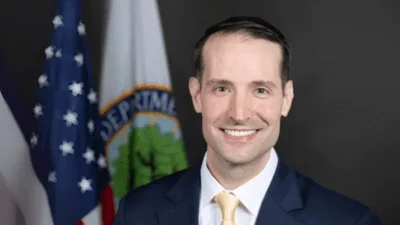The National Park Service's new Upper Delaware Scenic and Recreational River superintendent brings with her solid people skills, the area's NPS regional director said in a news release.
Upper Delaware Scenic and Recreational River's new superintendent, Lindsey Kurnath, was announced by NPS Northeast Regional Director Gay Vietzke in a Monday news release.
"Lindsey knows how to bring people together to share common interests," Vietzke said. "She values the experience and expertise of park staff and community members and inspires others to work towards common goals. Her experience and energy make her a great fit for the job."

National Park Service Northeast Regional Director Gay Vietzke
| nps.gov/
Kurnath said in the news release that she is "thrilled" to join the park team.
"I look forward to strengthening and growing the park's relationship with the Upper Delaware Council along with neighbors and members of the community, so that we can work collaboratively and creatively to protect the unique natural, cultural, scenic and recreational resources of the Upper Delaware River," Kurnath said.
"The park team is exceptional, and I am excited to learn from the talented and dedicated employees as we begin our work together," she added.
Kurnath arrives from the Fire Island National Seashore, where she has been deputy superintendent since 2020, including four months as acting superintendent. She previously worked at Mount Rainier National Park in Washington state where she was chief of administration and business management.
Kurnath began her NPS career in 2010 when she became a management analyst for the Business Management Group in Washington, D.C.
The Upper Delaware Scenic and Recreational River at 74 River Road in Beach Lake, Pennsylvania, is open 24 hours a day and charges no admission.
The area has a long history of settlement, including Native Americans who lived along the banks of the Upper Delaware River possibly as early as 15,000 B.C., according to information on NPS' website. Continued habitation certainly was under way by about 6,000 B.C. The Woodland Indian culture in the area dates from about 1,000 B.C. and was the region's first to practice agriculture.
The later Munsee Indian culture encountered Dutch traders around 1614 A.D. Swedish settlers reportedly pushed as far north as Cochecton by 1630, with more substantial settlements arriving in the 1730s.
So-called "Connecticut Yankees" and a few Dutch settlers arrived in the late 18th and early 19th centuries, followed by the Irish, who helped build the Delaware & Hudson Canal and Erie Railroad. German settlers came to farm the land. Typical new arrivals in the 20th Century were urban residents looking for green space and a quieter home.









